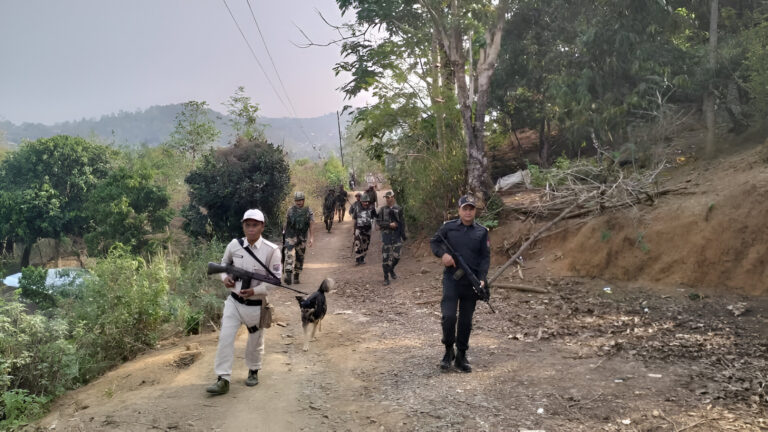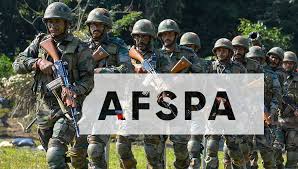PM Modi Faces Criticism Over Manipur Conflict Response Amid Ukraine Diplomatic Efforts
Summary
AIMIM chief Asaduddin Owaisi recently criticized Prime Minister Narendra Modi for his lack of direct involvement in addressing the ongoing ethnic conflict in Manipur. According to Owaisi, while the Prime Minister has been active in global diplomatic efforts, such as attempting to mediate the Ukraine-Russia war, he has avoided visiting Manipur, where violence between tribal groups has led to widespread unrest. Owaisi argued that PM Modi’s focus on international issues should not overshadow pressing domestic concerns like the conflict in Manipur.
India’s Domestic Turmoil: Manipur Conflict and Government Response
Manipur, a northeastern state known for its rich cultural heritage and scenic beauty, has been grappling with ethnic violence that has unsettled the state’s social fabric. Tribal tensions, particularly between the Meitei and Kuki communities, have escalated to violent clashes in recent months, leading to the displacement of thousands of people and the death of many. Despite this, Prime Minister Narendra Modi has faced criticism for not visiting the conflict-ridden state, which has further fueled political debates on the government’s handling of the crisis.
Asaduddin Owaisi, the president of the All India Majlis-e-Ittehadul Muslimeen (AIMIM), recently made headlines when he pointed out that PM Modi has been preoccupied with international diplomatic matters—such as mediating the Ukraine-Russia conflict—while domestic issues like Manipur have seemingly been overlooked.
The Root Cause: Understanding the Ethnic Tensions in Manipur
Decades of Ethnic Rivalries
The ethnic strife in Manipur is deeply rooted in historical and cultural differences. The state is home to several ethnic groups, with the dominant Meitei residing primarily in the Imphal Valley, while the Naga and Kuki tribes occupy the surrounding hill districts. The competing claims for political representation, land rights, and resources have led to a long history of animosity between these communities.
The latest round of violence was triggered by a court ruling that proposed granting Scheduled Tribe (ST) status to the Meitei community. This decision sparked fears among the hill tribes, particularly the Kukis, that they would lose their rights and access to land if the Meiteis gained ST status. What began as protests quickly spiraled into widespread violence, with homes being burned, communities displaced, and several casualties reported.
Why the Absence of PM Modi in Manipur is a Hot Topic
Global vs. Local: A Balancing Act
India is a rising global power, and Prime Minister Modi has played a significant role in shaping the country’s foreign policy and international standing. His recent diplomatic efforts include mediating the Ukraine-Russia war, engaging with global leaders on platforms like the G20 summit, and reinforcing alliances such as the Quad in the Indo-Pacific region. However, Owaisi and other critics argue that Modi’s international focus comes at a cost—his absence in domestic matters, especially in times of crisis, can alienate local communities.
The conflict in Manipur represents a humanitarian crisis, and many argue that the Prime Minister’s presence could symbolize the government’s commitment to restoring peace and stability. Owaisi emphasized that while PM Modi travels abroad for global diplomacy, he has not made a single visit to Manipur, further inflaming tensions in the region.
Political and Humanitarian Concerns in Manipur
Displacement and Casualties
The ongoing violence in Manipur has resulted in the displacement of over 50,000 people, many of whom have sought refuge in relief camps. The lack of essential supplies, poor sanitation, and the looming threat of continued violence have left many citizens in dire conditions. Additionally, the conflict has caused significant casualties, although the exact number of deaths and injuries remains contested, with various reports offering different figures.
The tribal conflicts have also led to a breakdown in law and order, with armed groups clashing with both state forces and one another. The unrest has spread from the hill areas to the more urbanized Imphal Valley, prompting the state government to deploy paramilitary forces and impose curfews in a bid to restore calm.
The Role of Security Forces
Security forces, including the Assam Rifles and the Indian Army, have been deployed to maintain peace in the conflict-affected areas. However, their presence has been met with mixed reactions from local communities. While some hail their role in providing security, others see the military presence as an encroachment on local autonomy. There have been reports of human rights abuses and excessive use of force, which further complicate the situation.
The Larger Debate: Federalism, Autonomy, and Representation
Demand for Autonomy
The demand for greater autonomy among Manipur’s tribal communities has been a longstanding issue. Many groups, particularly the Kukis and Nagas, have called for separate administrative units or even statehood to ensure they have control over their own affairs. The Meiteis, on the other hand, argue that they are being marginalized within the state and need more political representation.
This tug-of-war between different communities has placed the central government in a difficult position. Balancing the interests of the various ethnic groups, while ensuring the territorial integrity of Manipur, remains a challenge. The ongoing violence underscores the failure to resolve these deep-seated grievances through political dialogue.
Federalism and the Role of the Central Government
The Manipur conflict also raises questions about the role of the central government in addressing state-level issues. India’s federal structure gives states a significant degree of autonomy, but the central government is often called upon to intervene in times of crisis. Critics of PM Modi’s government argue that more decisive action is needed to quell the violence and engage in meaningful dialogue with all parties involved.
At the same time, the state government, led by Chief Minister N. Biren Singh, has faced its own share of criticism for failing to prevent the escalation of violence. While curfews and internet shutdowns have been implemented to control the unrest, these measures have also been seen as draconian by some sections of society.
Global Diplomacy vs. Domestic Priorities: Can Modi Strike a Balance?
The Ukraine-Russia Conflict: Modi’s Involvement
Prime Minister Modi’s involvement in international issues, such as his efforts to mediate between Russia and Ukraine, is part of his broader vision for India as a global leader. India’s neutral stance in the Ukraine conflict has positioned the country as a potential mediator in the ongoing war. Modi’s diplomacy on the global stage, particularly his dialogue with Russian President Vladimir Putin and Ukrainian President Volodymyr Zelensky, has earned him international praise.
However, the focus on foreign affairs comes at a time when domestic issues—like the Manipur conflict—are pressing. Critics like Owaisi argue that Modi’s international ambitions should not overshadow the government’s responsibility to address crises within India’s borders.
Striking a Balance
The challenge for PM Modi, and indeed any leader in his position, is striking the right balance between global diplomacy and domestic responsibilities. India’s rising global profile demands that its leadership engages on the world stage, but this cannot come at the expense of addressing critical internal issues. The Manipur conflict serves as a reminder that domestic peace and stability are foundational to India’s global ambitions.
Conclusion
The ongoing conflict in Manipur has exposed the deep ethnic divides that have long plagued the state. While the recovery of looted weapons and the deployment of security forces may provide temporary relief, a lasting solution requires political dialogue, community engagement, and genuine efforts to address the grievances of all ethnic groups. Critics like Owaisi argue that PM Modi’s absence from the region signals a lack of commitment, but it remains to be seen how the government will navigate this crisis moving forward.
The balancing act between global diplomacy and domestic governance is a difficult one, but one thing is clear: addressing the crisis in Manipur must be a priority if India is to maintain both its internal cohesion and its growing international stature.
FAQs
- What caused the ethnic violence in Manipur?
The violence was triggered by a court ruling proposing Scheduled Tribe status for the Meitei community, which caused fears among other tribes about land rights and political power. - Why is PM Modi facing criticism regarding the Manipur conflict?
Critics argue that PM Modi has not visited Manipur during the conflict, focusing instead on international issues like the Ukraine-Russia war. - What is the role of insurgent groups in Manipur’s conflict?
Insurgent groups play a significant role in fueling the violence, often engaging in clashes with security forces and rival ethnic groups. - How is the government addressing the violence in Manipur?
The government has deployed security forces, imposed curfews, and attempted to control the flow of illegal arms into the state. - What is the long-term solution to Manipur’s conflict?
A lasting solution involves political dialogue, addressing ethnic grievances, and fostering greater autonomy for the region’s tribal communities.




